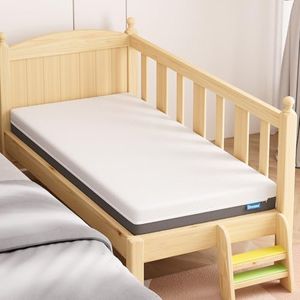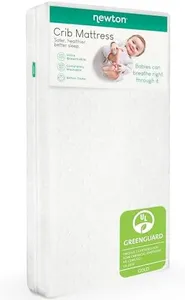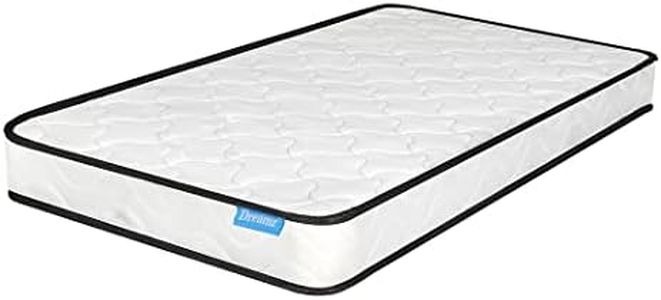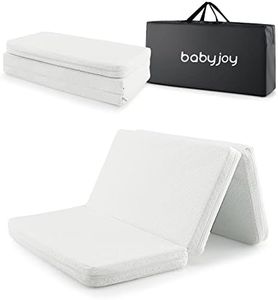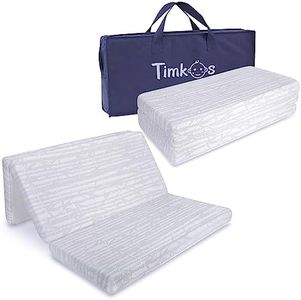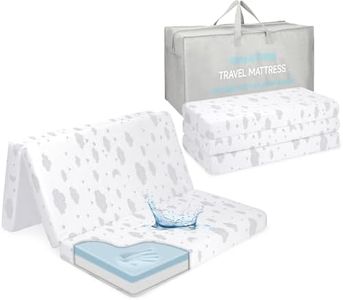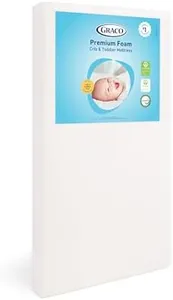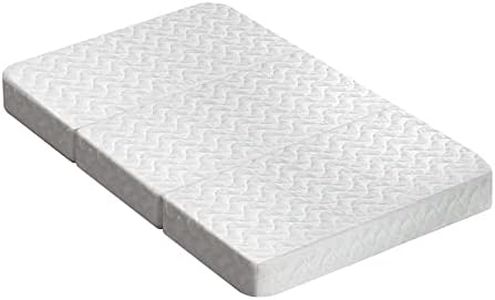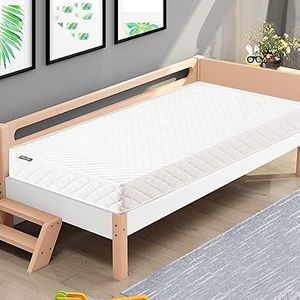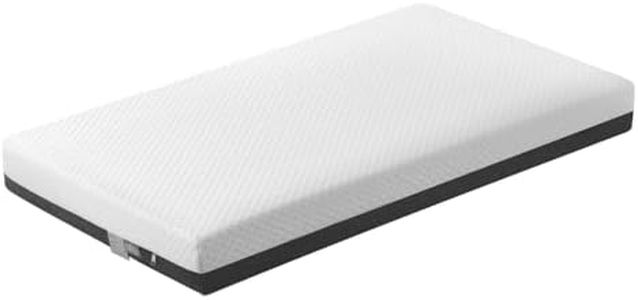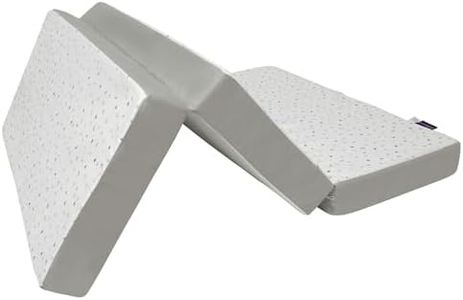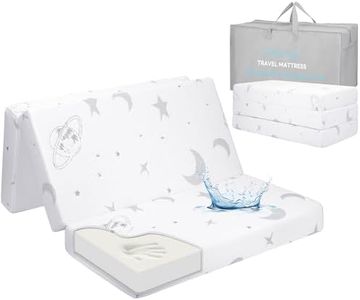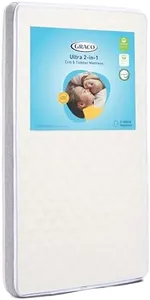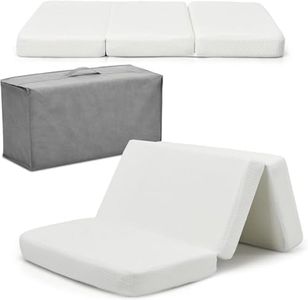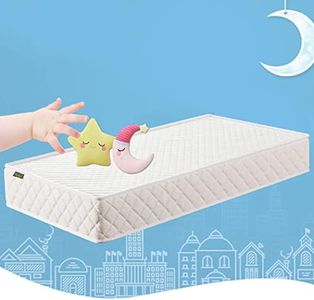We Use CookiesWe use cookies to enhance the security, performance,
functionality and for analytical and promotional activities. By continuing to browse this site you
are agreeing to our privacy policy
10 Best Baby Mattress
From leading brands and best sellers available on the web.Buying Guide for the Best Baby Mattress
Choosing a baby mattress is an important decision because your baby will spend many hours sleeping on it during those crucial early months and years. Comfort, safety, and suitability for your child’s age and development should be your main concerns. By understanding the main features and specifications of baby mattresses, you’ll be able to make a choice that supports your baby’s health and sleep quality.Size and FitThe size and fit of a baby mattress refer to how well the mattress matches the dimensions of your baby's crib or cot. This is important because a mattress that is too small or too large can create gaps, posing a safety risk where your baby could get stuck or injured. Baby mattresses typically come in standard sizes (like crib or cot size), but it's always important to measure your crib and ensure the mattress fits snugly with no more than two fingers' width between the mattress and the crib sides. Always double-check the compatibility before buying, as the right fit makes for safer sleep.
FirmnessFirmness is about how hard or soft the mattress feels. For babies, a firm mattress is essential to provide proper support and reduce the risk of suffocation and Sudden Infant Death Syndrome (SIDS). Mattresses for babies are usually rated as firm, medium-firm, or soft. Always go for firm when your child is under one year old; softer mattresses can be considered as the baby grows older and mobility improves, but generally, safety guidelines recommend sticking to firm surfaces for infants.
MaterialThe mattress material can impact comfort, breathability, and potential allergies. Common materials include foam, innerspring, and organic/cotton. Foam mattresses are lightweight and budget-friendly, innerspring models are more durable and supportive, and organic options use natural materials, which some parents prefer to avoid chemicals. For breathability and to reduce overheating, look for mattresses described as ventilated or breathable. If your baby has sensitivities, hypoallergenic materials or certified organic options are ideal.
Waterproof/Water-Resistant CoverA waterproof or water-resistant cover prevents liquids from soaking into the mattress, helping to keep it clean and hygienic in case of spills or diaper leaks. Some mattresses come with a built-in waterproof layer, while others may require you to add a separate protector. A cover that is easy to wipe clean or remove for washing makes maintenance much simpler, which is especially useful for parents who want to keep the sleeping environment as clean as possible.
BreathabilityBreathability refers to the mattress’s ability to let air flow through it, which helps regulate temperature and prevents overheating. Mattresses with breathable fabrics or designs (like mesh sides or ventilation holes) are especially valued for babies, who can’t regulate their body temperature as well as adults can. If you live in a very warm climate or are especially concerned about safe sleep, look for breathable options to help promote comfortable, safe rest.
Certifications and Safety StandardsCertifications (such as those for non-toxicity, low chemical emissions, or meeting flame retardant standards) indicate that a mattress has been tested for certain health and safety guidelines. Look for labels showing compliance with recognized safety standards or certifications (like Greenguard Gold or CertiPUR-US), especially if you want assurance against harmful chemicals or you value eco-friendly manufacturing. These give parents additional peace of mind that the mattress is safe for infants.
WeightThe weight of the mattress can influence how easy it is to change sheets or move the mattress for cleaning. Foam mattresses tend to be lighter, while innerspring types are heavier but more durable. If you plan to change bedding often or want a product that's easy to maneuver, you may prefer a lighter mattress.
